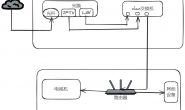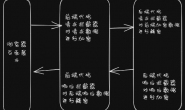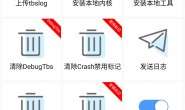ThreadPoolExecutor 的实现
主要是有四个构造函数,参数最多的是七个:
// 1
public ThreadPoolExecutor(int corePoolSize,
int maximumPoolSize,
long keepAliveTime,
TimeUnit unit,
BlockingQueue workQueue) {
this(corePoolSize, maximumPoolSize, keepAliveTime, unit, workQueue,
Executors.defaultThreadFactory(), defaultHandler);
}
// 2
public ThreadPoolExecutor(int corePoolSize,
int maximumPoolSize,
long keepAliveTime,
TimeUnit unit,
BlockingQueue workQueue,
ThreadFactory threadFactory) {
this(corePoolSize, maximumPoolSize, keepAliveTime, unit, workQueue,
threadFactory, defaultHandler);
}
// 3
public ThreadPoolExecutor(int corePoolSize,
int maximumPoolSize,
long keepAliveTime,
TimeUnit unit,
BlockingQueue workQueue,
RejectedExecutionHandler handler) {
this(corePoolSize, maximumPoolSize, keepAliveTime, unit, workQueue,
Executors.defaultThreadFactory(), handler);
}
// 4
public ThreadPoolExecutor(int corePoolSize,
int maximumPoolSize,
long keepAliveTime,
TimeUnit unit,
BlockingQueue workQueue,
ThreadFactory threadFactory,
RejectedExecutionHandler handler) {
if (corePoolSize < 0 ||
maximumPoolSize <= 0 ||
maximumPoolSize < corePoolSize ||
keepAliveTime < 0)
throw new IllegalArgumentException();
if (workQueue == null || threadFactory == null || handler == null)
throw new NullPointerException();
this.corePoolSize = corePoolSize;
this.maximumPoolSize = maximumPoolSize;
this.workQueue = workQueue;
this.keepAliveTime = unit.toNanos(keepAliveTime);
this.threadFactory = threadFactory;
this.handler = handler;
}
1. 构造器各个参数的含义:
corePoolSize : 核心池的大小,这个参数跟后面讲述的线程池的实现原理有非常大的关系。在创建了线程池后,默认情况下,线程池中并没有任何线程,而是等待有任务到来才创建线程去执行任务,除非调用了prestartAllCoreThreads()或者prestartCoreThread()方法,从这2个方法的名字就可以看出,是预创建线程的意思,即在没有任务到来之前就创建corePoolSize个线程或者一个线程。默认情况下,在创建了线程池后,线程池中的线程数为0,当有任务来之后,就会创建一个线程去执行任务,当线程池中的线程数目达到corePoolSize后,就会把到达的任务放到缓存队列当中;
maximumPoolSize :线程池最大线程数,这个参数也是一个非常重要的参数,它表示在线程池中最多能创建多少个线程;
keepAliveTime :表示线程没有任务执行时最多保持多久时间会终止。默认情况下,只有当线程池中的线程数大于corePoolSize时,keepAliveTime才会起作用,直到线程池中的线程数不大于corePoolSize,即当线程池中的线程数大于corePoolSize时,如果一个线程空闲的时间达到keepAliveTime,则会终止,直到线程池中的线程数不超过corePoolSize。但是如果调用了allowCoreThreadTimeOut(boolean)方法,在线程池中的线程数不大于corePoolSize时,keepAliveTime参数也会起作用,直到线程池中的线程数为0;
unit: 参数keepAliveTime的时间单位,有7种取值,在TimeUnit类中有7种静态属性:
TimeUnit.DAYS; //天 TimeUnit.HOURS; //小时 TimeUnit.MINUTES; //分钟 TimeUnit.SECONDS; //秒 TimeUnit.MILLISECONDS; //毫秒 TimeUnit.MICROSECONDS; //微妙 TimeUnit.NANOSECONDS; //纳秒
workQueue : 一个阻塞队列,用来存储等待执行的任务,这个参数的选择也很重要,会对线程池的运行过程产生重大影响,一般来说,这里的阻塞队列有以下几种选择:
ArrayBlockingQueue; LinkedBlockingQueue; SynchronousQueue;
ArrayBlockingQueue和PriorityBlockingQueue使用较少,一般使用LinkedBlockingQueue和Synchronous。线程池的排队策略与BlockingQueue有关。
threadFactory : 线程工厂,主要用来创建线程;
handler : 表示当拒绝处理任务时的策略,有以下四种取值:
ThreadPoolExecutor.AbortPolicy:丢弃任务并抛出RejectedExecutionException异常。 ThreadPoolExecutor.DiscardPolicy:也是丢弃任务,但是不抛出异常。 ThreadPoolExecutor.DiscardOldestPolicy:丢弃队列最前面的任务,然后重新尝试执行任务(重复此过程) ThreadPoolExecutor.CallerRunsPolicy:由调用线程处理该任务
execute 方法
public void execute(Runnable command) {
if (command == null)
throw new NullPointerException();
/*
* Proceed in 3 steps:
*
* 1. If fewer than corePoolSize threads are running, try to
* start a new thread with the given command as its first
* task. The call to addWorker atomically checks runState and
* workerCount, and so prevents false alarms that would add
* threads when it shouldn't, by returning false.
*
* 2. If a task can be successfully queued, then we still need
* to double-check whether we should have added a thread
* (because existing ones died since last checking) or that
* the pool shut down since entry into this method. So we
* recheck state and if necessary roll back the enqueuing if
* stopped, or start a new thread if there are none.
*
* 3. If we cannot queue task, then we try to add a new
* thread. If it fails, we know we are shut down or saturated
* and so reject the task.
*/
// 返回包含线程数,以及线程状态的Integer类型数值
int c = ctl.get();
// 如果工作者线程数小于核心线程数,则创建线程任务并执行
if (workerCountOf(c) < corePoolSize) {
// addWorker 很重要,见源码解析
if (addWorker(command, true))
return;
// 如果创建失败,防止外部已经在线程池增加新的任务,重新获取一下
c = ctl.get();
}
// 如果线程池处于运行状态,才执行后半句 将任务加入队列
if (isRunning(c) && workQueue.offer(command)) {
int recheck = ctl.get();
// 如果线程池不是运行状态,将刚加入队列的任务移除
if (! isRunning(recheck) && remove(command))
reject(command);
// 如果之前的线程已经消费完,就尝试新建一个线程
else if (workerCountOf(recheck) == 0)
addWorker(null, false);
}
// 核心池和队列都已满,尝试创建新线程
else if (!addWorker(command, false))
// 创建失败,唤醒拒绝策略
reject(command);
}
发生拒绝的理 有两个
1. 线程池状态为非running 状态
2. 等待队列己满。
worker 的源码解析:
/**
根据当前线程池的状态,检查是否可以添加新的任务线程,如果可以则创建并启动任务
如果一切正常则返回true,返回false的可能性如下:
1. 线程池没有处于running 状态
2. 线程工厂创建新的任务线程失败
first task 外部启动线程构建的第一个线程,它是线程的母体
core 新增工作线程时的判断指标,解释如下:
true: 表示新增工作线程时的,需要判断当前 RUNNING 状态的线程是否少于 corepoolSize
false: 表示新增工作线程时的,需要判断当前 RUNNING 状态的线程是否少于 maximumPoolSize
**/
private boolean addWorker(Runnable firstTask, boolean core) {
// 不需要自定义任务的语法标签,响应上下文的 continue retry 快速退出多层嵌套循环
retry:
for (;;) {
int c = ctl.get();
int rs = runStateOf(c);
// Check if queue empty only if necessary.
if (rs >= SHUTDOWN &&
! (rs == SHUTDOWN &&
firstTask == null &&
! workQueue.isEmpty()))
return false;
for (;;) {
// 如果超过最大线程允许的线程数则不能添加新的线程
// 最大线程数不能超过 2^29 否则影响左边三位的线程池状态值
int wc = workerCountOf(c);
if (wc >= CAPACITY ||
wc >= (core ? corePoolSize : maximumPoolSize))
return false;
// 将当前活动线程数加 1 (第3处)
if (compareAndIncrementWorkerCount(c))
break retry;
// 线程池状态和工作线程数是可变化的,需要经常提取这个最新的值
c = ctl.get(); // Re-read ctl
// 如果已经关闭,再从retry 标签进入
if (runStateOf(c) != rs)
continue retry;
// 如果线程还是处于RUNNing 状态,那就说明仅仅是在 第3处 失败
// else CAS failed due to workerCount change; retry inner loop
}
}
// 开始创建工作线程
boolean workerStarted = false;
boolean workerAdded = false;
Worker w = null;
try {
// 利用Woker 构造方法创建线程,并封装成工作线程Woker 对象
w = new Worker(firstTask);
// 注意这是woker中的属性对象 thread
final Thread t = w.thread;
if (t != null) {
// 在进行ThreadPoolExecutor 的敏感操作时
// 都需要持有主锁、避免在添加和启动线程时被干扰
final ReentrantLock mainLock = this.mainLock;
mainLock.lock();
try {
// Recheck while holding lock.
// Back out on ThreadFactory failure or if
// shut down before lock acquired.
int rs = runStateOf(ctl.get());
//当线程状态为Running或shutdown
// 且 firstTask 初始线程为空时
if (rs largestPoolSize)
largestPoolSize = s;
workerAdded = true;
}
} finally {
mainLock.unlock();
}
if (workerAdded) {
// 终于看到start方法
// 注意,并非线程池的execute的command参数指向的线程
t.start();
workerStarted = true;
}
}
} finally {
if (! workerStarted)
// 线程启动失败,把刚才添加的工作线程计数再减回去
addWorkerFailed(w);
}
return workerStarted;
}
总结
总结一下,使用线程池要注意以下几点:
1. 合理设置各类参数,应根据实际业务场景来设置合理的工作线程数
2. 线程资源必须通过线程池提供,不允许在应用中自行显示创建线程
3. 创建线程或者线程池时指定有意义的线程名称,方便出错时回溯
线程池不想允许使用Executors,而是通过ThreadPoolExecutor的方式创建,这样的处理方式能更加明确线程池的运行规则,规避资源耗尽的风险。



